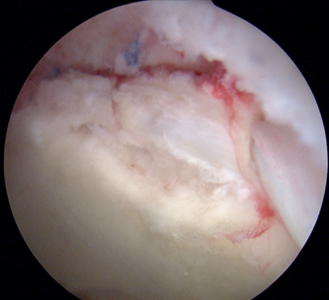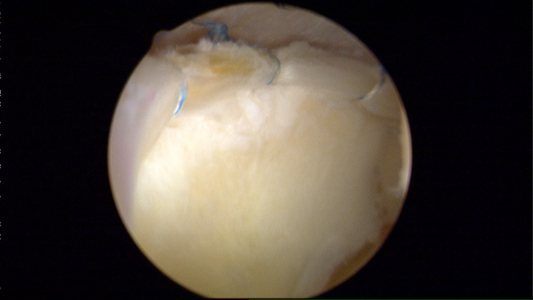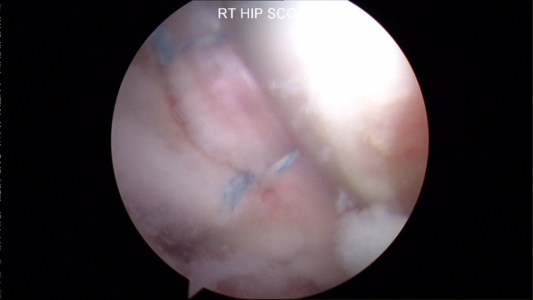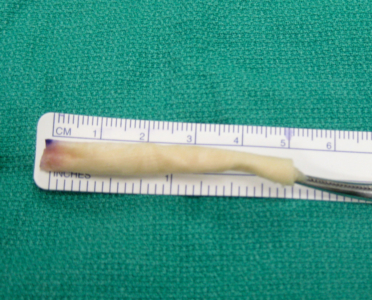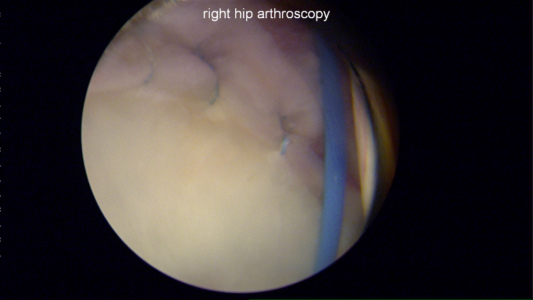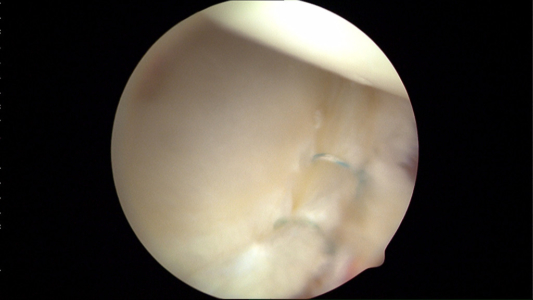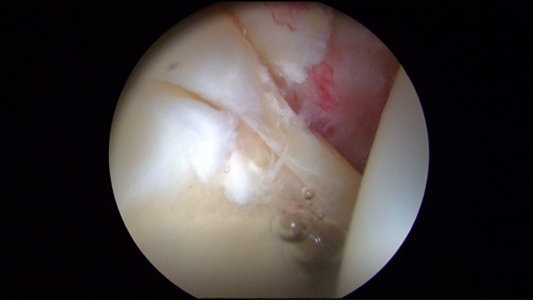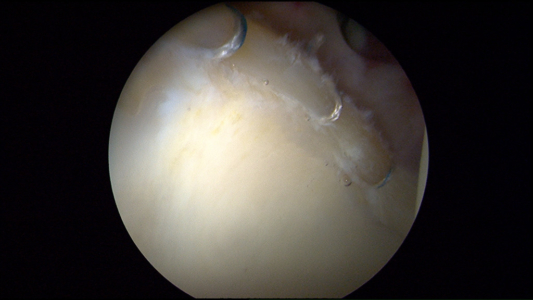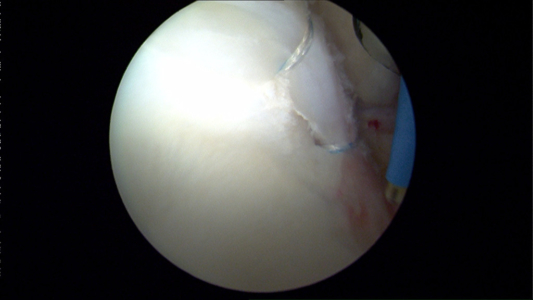A hip labrum tear – or acetabular labrum tear – is a tear in the ring of fibrocartilage (fibrous cartilage) that encircles the acetabulum (cup) of the hip joint and increases its depth. The head of the femur (the bone in the thigh) fits in the acetabulum. The labrum deepens this cavity and effectively increases the surface (and strength) of the hip joint. Thus, the labrum serves to maintain normal forces and function of the joint. An acetabular labrum tear is an injury to that ring of fibrocartilage that leads to abnormal forces and early joint damage, and is a known contributor to the development of arthritis.
Office Appointments and Telemedicine with Dr. Carreira

You can also book an office appointment or a telemedicine visit by calling Dr. Carreira’s office at 404-355-0743. Book now.

 What is the Labrum?
What is the Labrum?
The labrum is a fibrocartilage ring that surrounds the rim of the joint socket aiding in shock absorption, joint lubrication, pressure distribution, and stability.
What is a Labral Tear?
The term labral tear includes a variety of forms of injury to the acetabular labrum. There is a lot published on the outcomes of labral tears without differentiating forms of injury. As a result, the analogy which Dr. Carreira likes to use in describing these forms of injury is that the labrum is similar to a rope at the dock of a boat. It may appear old, small, frayed, partially torn, or nearly completely torn, or a combination of these factors.
Labral Degeneration: Degenerative changes in the labrum are “wear and tear” changes that include damage to the substance of the tissue itself. Studies of the tissue itself demonstrate that the tissue fibers lose their orientation and their makeup changes in terms of the connections and type of collagen. The most important cause is age, but other factors such as traumatic injury, femoroacetabular impingement, laxity, and dysplasia may contribute.
Complexity of Tearing: A complex tear may consist of multiple cleavage planes of variable depth that extend perpendicular to the surface of the labrum.
Hypoplastic: The tissue may be small in size, including after stabilizing the damaged tissue. Once the tissue is smoothed out for repair, the amount of tissue can differ across patients. In revision surgeries, the amount of tissue that remained after the initial surgery may be important.
What Causes An Acetabular Labrum Tear?
Injuries to the acetabular labrum (or an acetabular labrum tear) can occur from chronic trauma due to repetitive hip motion or from acute trauma as, for example, from a direct blow to the hip or a violent motion of the hip. Femoroacetabular impingement (FAI) also has been associated with the development of hip labrum tears and with articular cartilage injury. Additionally, other abnormal bone structures around the hip also can contribute to injury such as Perthes disease, dysplasia, and slipped capital femoral epiphysis (SCFE).
Diagnosis of Acetabular Labrum Tears
Signs and symptoms of an acetabular labrum injury (labral tear) include pain accompanying hip motion, occasional pain in the hip at night or during daily activities, decreased range of motion and loss of strength in the hip. Mechanical symptoms such as grinding, popping, clicking, or snapping also may occur.
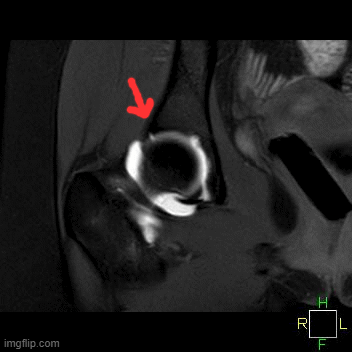
MRI can be useful for diagnosis of Labral Tears. Here we see images from the coronal view demonstrating a large labral tear. Note the elongated white signal at the arrow on multiple frames which shows the separation of the labrum from the acetabulum.
Treatment of Hip Labral Tears
Repair of an acetabular labrum tear (labral tear), or hip labrum tear, also has been termed refixation or reattachment. Debridement refers to the “cleaning up” or removal of torn tissue, with the goal of leaving a stable rim of healthy tissue. The labrum can be damaged in many different ways, including by degeneration, instability, radial tears, longitudinal tears, detachment from the rim, and a combination of these. The indications for repair versus debridement of these different types of tears are not entirely clear. However, there is increasing evidence to support improved success with repair versus debridement.
A number of studies have demonstrated high success rates with groups of patients with repairs only, but there are few studies comparing these two methods of treatment directly. “Arthroscopic debridement versus refixation of the acetabular labrum associated with femoroacetabular impingement (FAI)” by Larson and Giveans in 2009, and “Treatment of femoroacetabular impingement: Preliminary results of labral refixation” by Espinosa et al in 2006 both demonstrated improved outcomes with the repair group compared to the debridement group.
Hip Labrum Tear Video
Hip Labral Repair for Tear using Arthroscopy
Please note that there is no sound with the above video showing arthroscopic repair of a hip acetabular labral tear.
In the above arthroscopic video of the hip, the probe is demonstrating an unstable flap of cartilage immediately adjacent to the labrum, which is underneath the probe. The probe then pushes on the labrum to demonstrate its instability as well.
In this video we demonstrate the repair of the articular cartilage at the time of labral repair, and the suture passer is seen penetrating the articular cartilage. The sutures then are tied around both the articular cartilage and the labrum to create one continuous surface. In the majority of cases, the articular cartilage cannot be incorporated like this into the repair, but attempts to reestablish normal anatomy is a common goal in orthopedics which was accomplished in this case.
The immediately above video is age-restricted by YouTube as it shows an arthroscopic surgical procedure. The video is available for viewing on YouTube.
Repair of Hyperplastic (Abnornally Large Diameter) Labral Tissue
The above video demonstrates the repair of a hyperplastic labral tissue, which is healthy. The labral tissue is considered hyperplastic as it is of an abnormally large diameter. It is thicker than is normally seen in labral tissue. The video shows the repair viewed towards the back of the joint, showing four (4) of the anchors. An additional one (1) more was placed toward the front of the joint.
All of the above videos are also available on Dr. Carreira’s YouTube channel.
Acetabular Labral Tears: Repair vs. Reconstruction
The role of repair versus reconstruction, depending on the form of tearing and injury, is an area of some debate among advanced hip arthroscopists. For that reason, this debate is one of the main areas in which Dr. Carreira regularly makes academic contributions.
Moreover, the Multicenter Arthroscopy Study of the Hip is focusing efforts to gain additional information about these injuries to help determine the optimal form of treatment. Preserving labrum tissue is the main goal of treatment, but there are injuries in which the labrum is irreparable. The vast majority of patients in Dr. Carreira’s practice are treated with labrum repair.
Acetabular Labrum Repair with Four (4) Circumferential Sutures
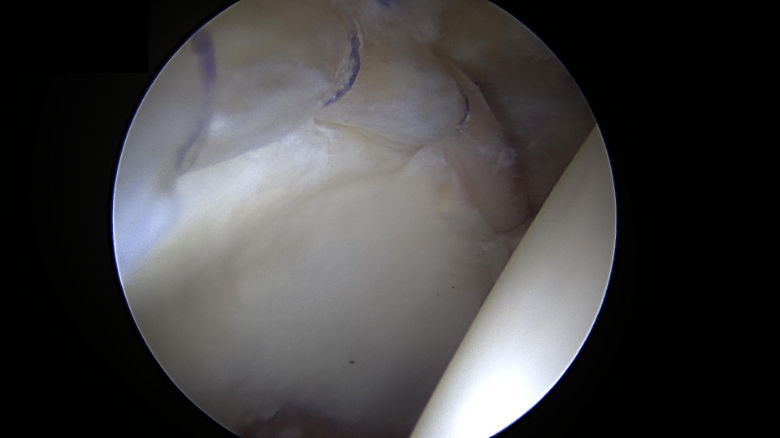
The above photo shows a hip labrum repair via four (4) circumferential sutures on the right hip of a 35-year-old woman.
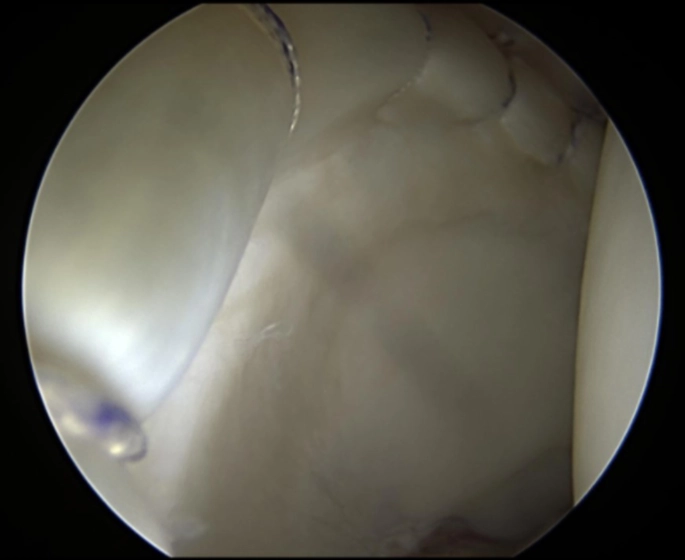
This arthroscopic image demonstrates an example of labral repair with healthy, robust tissue. Dr. Carreira completed the above 5-anchor repair in a patient who was also undergoing a periacetabular osteotomy following for a diagnosis of dysplasia (shallow hip socket). Note the rim of early cartilage damage along the periphery of the cup (acetabulum), which is related to the abnormal forces in dysplasia. Those abnormal forces caused some damage to the articular cartilage – damage which is not easy to spot on imaging such as MRI or CT scan.
Acetabular Labral Reconstruction of the Hip – Addressing a Hip Labral Tear
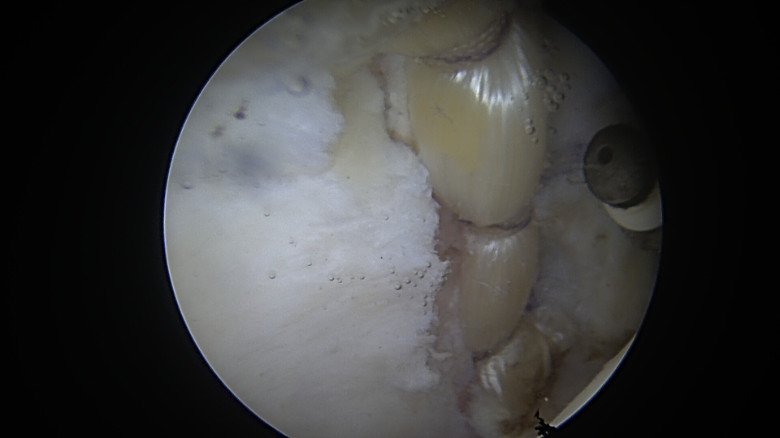
The above photo shows a fascia lata allograft in the labral reconstruction of the hip in athletic 29-year-old male.
Labral Reconstruction as a Revision Surgery
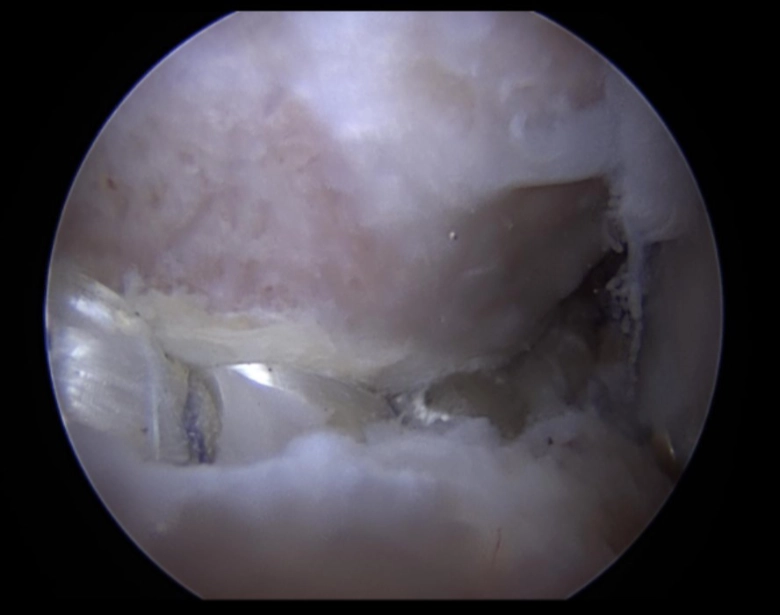
The immediately above image is an example of the labral reconstruction that was done as a revision surgery. The labrum can be seen along the bottom of the screen, and as the femoral head runs along the top of the image. The femoral head had been previously trimmed in impingement treatment. With the new graft in place, impingement testing is performed by moving the hip in various positions to make sure that there are no abnormal forces on the labrum.
Additional Hip Labral Issues and Surgical Procedures
Hip Labrum Repair with Five (5) Anchors
This arthroscopic video of a right hip demonstrates a labral repair with 5 anchors. Routinely we collect the condition of the labrum and in this case, the tissue is quite healthy. The complexity of the tearing is minimal with detachment at the base of the tissue noted alone. No significant degeneration is noted. The size of the labrum also appears to be normal.
The MASH Study Group – Multicenter Arthroscopy Study of the Hip (MASH) Study Group – has published on these factors as it relates to outcomes. Labrum injury is more complex than simply a tear or not.
Labral degeneration has been demonstrated to be a negative predictor when performing labral repairs, with the majority of the surgery doing well but the success rate is not quite as high as a labrum without degeneration that is repaired.
Chondrolabral Repair via Arthroscopic Surgery of the Hip: Repair of the Articular Cartilage
Chondrolabral Dysfunction
In the video below, one can appreciate the instability of the labrum and the underlying articular cartilage, as the two move as a complex excessively.
At the time of surgery, this was stabilized using suture anchors and the patient had an excellent result.
Additionally, note that there is also associated synovitis, as noted by the reddened appearance along the top of the screen.
Chondrolabral Repair via Arthroscopic Surgery of the Hip: Unstable Flap of Cartilage
All Arthroscropic Allograft Labral Reconstruction of the Hip
This video is age-restricted by YouTube as it shows an arthroscopic surgical procedure. Hence, the video is available for viewing on YouTube.
Hip Arthroscopy Placement Suture Anchor
YouTube’s automatic checks set age restrictions on the above video as it shows an arthroscopic surgical procedure. Consequently, it is available for viewing on YouTube.


